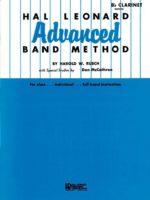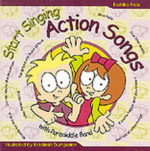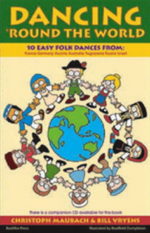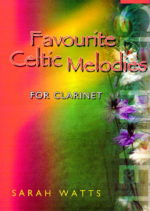Description
Pauline Bailey – Blues Portrait: A Profile of the Australian Blues Scene Volume 2.
Book review by Tony Smith
TN2545-B $40
TN160 Dec 23
Coping with the Coronavirus ‘lockdown’ threw musicians back onto their resourcefulness.
Blues musicians are eminently qualified to cope with such emergencies.
As their entries show, most have been self-reliant and independent right through their careers, being either completely or predominantly self-taught.
The pandemic hit emerging and fringe artists harder than established ones perhaps as they relied to a greater extent on live performance and travel.
No doubt one development during the lockdowns was greater reliance on co-operation over the internet.
Prominent names among the 42 in the second (2021) volume of 351 pages include Tim Rogers, Darren Jack, Jeannie Lewis, Angry Anderson, Margret Roadknight and Jim Conway.
It would be ideal to list every name, but at least those who contributed to this volume must have felt the support of all the 88 musicians so far represented in the first two volumes.
Again the diversity of performers and their interests is obvious.
Tim Rogers was not born when some of the veterans began working, so you would not expect the pattern of his career to be the same.
Nevertheless, he has crammed a wealth of experience into a relatively few years.
His time with the band, ‘You Am I’ took him on several overseas tours including four to the USA.
Rogers was born in Kalgoorlie, a reminder that blues musicians are found all around Australia including regional areas.
Moreover they tend to move around to seek venues and for purposes of collaborating with other artists.
In this regard, they resemble the troubadours of old.
While travel was not possible at the height of the Covid emergency, the artists again speak about going back to their roots.
Apart from finding the biggest markets in America, blues artists look to the birthplace of the blues firstly as a place of pilgrimage and also to test their own credentials.
If they are accepted in the blues capitals such as Chicago, Memphis and New Orleans, then they know they are doing something right.
While the socio-economic circumstances of their families varied, one consistent factor about these musicians is that they were exposed to music at an early age.
Indeed, some reckon they began to absorb music while still in the womb, which is not such a fanciful idea.
Many are of an era when radio was an important source, and this meant a certain dependence on the big record labels.
Many also report that their parents were of the era when 45 rpm records were popular, rather than more modern forms of sound reproduction.
Nicknames, or more poshly professional sobriquets, are common among blues musicians.
In this Volume appear ‘Continental’ Robert Susz, Mark ‘Harpo’ Greenway’, Peter ‘Boom Boom’ Beulke, Denis ‘Salty’ Trevarthen, and Nicole ‘Nikki D’ Brown.
And if individuals lack names that immediately identify them as blues musicians, many of their groups have names derived from blues experience, such as ‘Blues Doctors’, ‘Blues Preachers’, ‘Big Wheel’ and ‘Backsliders’.
Nor should it be thought that blues musicians necessarily stay in the same band for long.
Many, such as harmonica virtuoso. Jim Conway, are fine studio musicians and give first class support to some of Australia’s most successful performers across genres, not just blues, but rock, pop and country, and some change directions for other reasons.
Lockdowns also saw many musicians using their other skills such as art, illustrating and guitar building.
The established Darren Jack comments that writing songs has provided his satisfaction and he gets a ‘buzz’ even when playing at home, which he does daily.
That’s why he likes the blues, it is about feeling and emotion and is not just a theoretical exercise.
And Snooks La Vie says that ‘Songwriting doesn’t always have to be so intellectual as long as the narrative is real and creates a mood.
‘It’s got to paint a picture and that’s what great songs do.’
In the Foreword, Kerri Simpson describes Pauline Bailey as an ‘Alan Lomax type figure’.
Indeed, this is a good comparison, as like any good music editor or song collector, Bailey is bringing to print numerous anecdotes and previously unrecorded stories.
In the process, she encourages others to think about what they might say if approached to describe their own experiences.
Margret Roadknight uses some Irish wisdom as her sign-off: ‘When you’re happy, sing’ When you’re sad, sing louder!’
Paradoxically perhaps, singing the blues makes you feel better and reading about these musicians certainly will.
About The Books
Blues Portrait – A Profile of the Australian Blues Scene by Pauline Bailey Volumes 1, 2, 3 and 4
“Blues Portrait” provides a snapshot of the contemporary Australian blues scene. 172 musicians across four volumes share their thoughts and insights about their musical journeys and describe, in their own words, how they discovered the blues and what it means to them. The books explore how they have each shaped the broad, rich and diverse blues scene we have in Australia.


About Blues Portrait
In November 2019 I self-published my first book, Blues Portrait. This was followed by Volumes 2 and 3 which were released simultaneously in November 2021. The most recent installment, Volume 4, was published in 2023. I have always had a passion for Australian music – blues music in particular, and I’ve always believed that Australian blues has been overlooked in the musical landscape. When I started looking for books on the subject, I was surprised to discover that no one had properly documented this genre, so in 2017 I decided to track down some of this country’s blues legends. I was curious about their experiences and stories, and I thought other people might be interested in hearing them as well. I began with some friends and artists that I knew, and started the process of interviewing, transcribing, writing and building a profile of each artist on my list. Once I started interviewing people it quickly became evident that the blues scene was far more diversified and expansive than I had anticipated. The initial interviews were only the tip of the iceberg – each person took me down a different road, and I discovered many more people keen to tell their stories.
The end result is a collection of 172 people spread across four books, illustrating this country’s broad and impressive blues culture. Because the books also discuss how blues has affected and influenced other musical styles, I’ve included people who aren’t technically “blues” – individuals with a variety of backgrounds, influences, and inspirations, but who all have one thing in common: the desire to make music. I’m extremely grateful to every one of these incredible musicians for generously sharing their time, stories, and perspectives on what it means to be a musician.
Vol 2 viii, 352pp soft cover, colour pics throughout
Testimonials:
“Blues Portrait is an incredible book which documents the Australian blues music scene and it’s amazing musicians.” – Peter D. Harper
“Pauline Bailey’s “Blues Portrait” book series has every artist telling their story in their own words. The insights, philosophies, outlooks and tales make for a great read. Her choices for inclusion are interesting and diverse, the variety gives the book a wonderfully rich texture, and her interviewing style obviously made every one of them feel relaxed enough to open up.” – Craig B.
“If you collect music biographies (or just want a good read) you need this book. It fills a big void in any collection because there are so few books about blues musicians – especially Australian ones. Even if you’re not a blues fan (God forbid!), the book is full of great down-to-earth chats with the likes of Kevin Borich, Bob Spencer, Phil Para and Kerri Simpson, to name but a few.” – Sharon B.
“I learnt so much and filled in a lot of gaps that I didn’t even know were gaps in this wonderful music scene we have here. So grateful to have this book.” – Grant
“Can certainly recommend this book to any music enthusiast, no matter what their preferred genre is – the blues is where it all began for the music of today.” – Lee
“An unparalleled reference on blues music in Australia. Part 4 of this excellent series of books about the Australian blues scene does not disappoint and goes a huge way to furthering the knowledge base of this widely variable genre of music and those who keep it alive for now, and for future generations. Pauline Bailey has taken on this monumental task with gusto, and along the way has created an unparalleled reference of those who eat, breathe, live and play the blues.” – Andrew F





